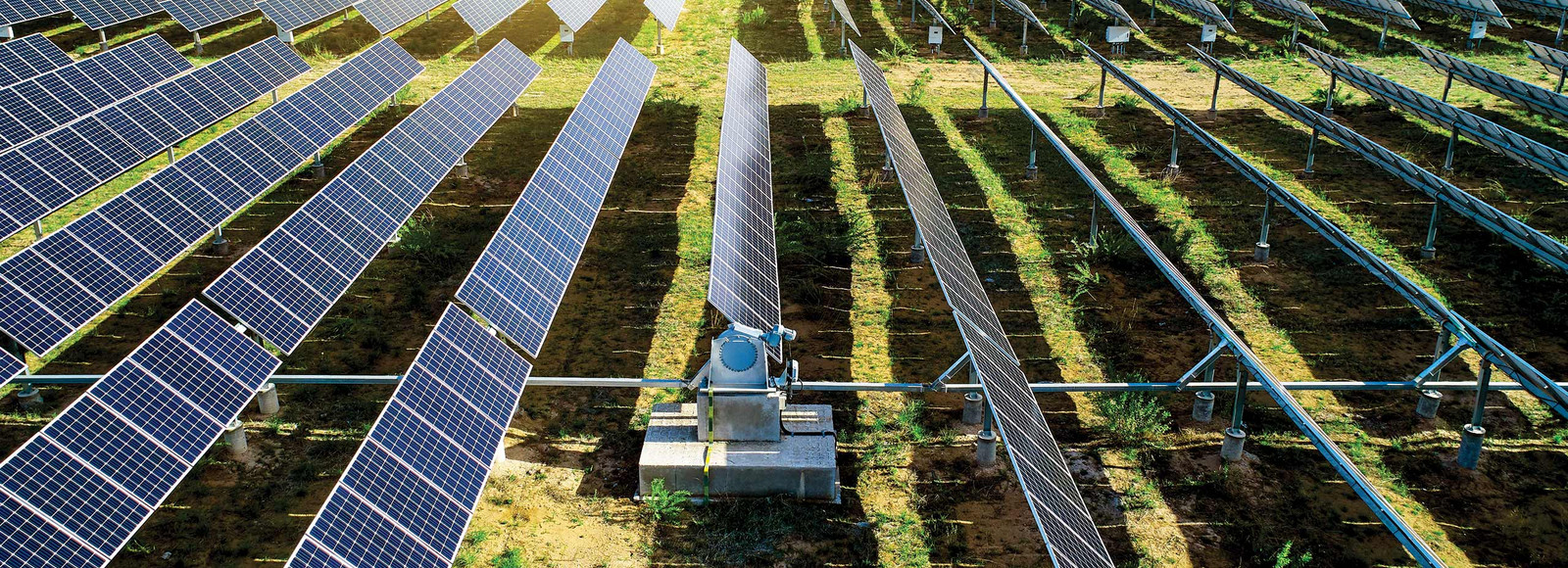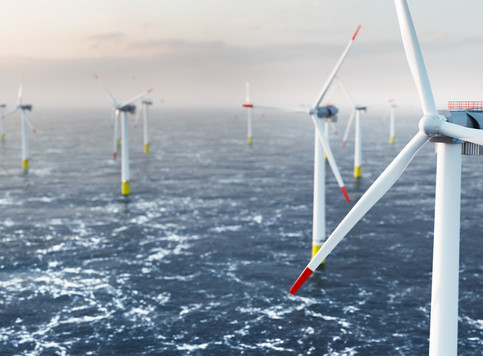PV solar plants on commercial real estate buildings in Norway
This article is also published in DLA Piper's global real estate magazine, Real Estate Gazette.
The solar power industry is experiencing robust growth in Norway, driven by the government's ambitious target to increase solar power production to 8 TWh, a 20% rise, by 2030. Policies initiated by the Norwegian Parliament, including the requirement to use solar power or local energy in state-owned construction projects, are behind this growth. This policy is likely to be extended to include any new construction projects, and upcoming regulations are expected to further incentivize the adoption of solar energy in new and existing buildings.
Transitioning to renewable energy is imperative in combating global warming. Norway has relied on hydroelectric power, capitalizing on its unique topography and climate. However, challenges from environmental and Indigenous groups have limited the expansion of wind and hydro power.
Contrary to initial perceptions, studies carried out by SINTEF [1], among others, demonstrate that Norway's climate does not impede solar power generation compared to other European countries. For example, annual solar irradiation levels (kWh/m2) in Norway range from approximately 700 kWt to 900 kWt [2], which is only slightly lower than Germany's range of 1,000 to 1,200 kWt [3]. In 2021, installed solar PV systems in Germany generated approximately 48.4 TWh of electricity, with 44.6 TWh integrated into the German grid and 3.8 TWh consumed by individuals [4]. In contrast, solar systems in Norway generated around 150-160 GWh in the same year. This comparable solar potential underscores a substantial market opportunity in Norway. [5]
For investors seeking real estate ventures with value-add opportunities, Norway offers an enticing opportunity.
Connection to the national grid
To maximize the benefits of PV solar plants, it's essential to connect the system to the national grid. Integration allows for the sale of excess energy during periods of high production and the purchase of energy during less sunny periods.
In Norway, a “plus-customer” is defined as an energy customer who both uses and produces electricity at their own connection point, with power fed into the connection point not exceeding 100 kW at any given time. Plus-customers are exempt from fixed charges for feed-in and grid rent for consumption covered by self-generated electricity. This exemption can result in significant savings on grid rent.
If production surpasses 100 kW, the customer must pay a fixed feed-in tariff for all power supplied to the grid, with a rate of 1.36 NOK/kWh (excluding VAT) in 2023.
Production between 1 and 2 GWh qualifies the producer for a simplified sales license, entailing fewer formal requirements, including exemptions from special accounts submissions, and specific financial and technical annual reporting. If the production exceeds 2 GWh, an ordinary sales license is required, and a range of comprehensive formal reporting requirements applies.
While many landlords in the commercial real estate market may aim for the plus-customer setup, the 100 kW limit has faced criticism for being too low. Nevertheless, it still offers substantial possible savings, and there's a possibility that this limit may be revised upwards in the future. A landlord with a large property portfolio should also look into organizing PV solar systems separately for each property/SPV to stay within production limits.
Fragmented regulatory framework
The regulatory framework for PV solar power in commercial properties can be described as fragmented. Instead of a unified set of regulations, it exists in pieces, collectively forming the framework. The specific regulations also vary based on the type and scale of the PV solar system. Typically, larger installations are subject to more extensive regulations compared to smaller ones.
PV solar systems come in two primary types: integrated and surface-mounted. Integrated panels serve a dual purpose, generating electricity while also acting as an integral part of the building's structure. Surface-mounted panels can be affixed to walls and roofs.
While smaller, surface-mounted panels may not require public permits, most PV solar systems will need them under the Planning and Building Act. It's advisable to consult with the local municipality for guidance, as practices may differ.
The regulations in the Planning and Building Act, along with the associated Regulations on technical requirements for construction works (TEK 17), outline specific and functional requirements. Developers must provide documentation demonstrating compliance with these technical standards. For new PV solar technology, which may not have pre-authorized solutions, a thorough verification is crucial to ensure compliance with formal requirements.
Building-integrated solar cell elements must meet the same standards as the component they replace. Safety considerations, especially for larger installations, require documentation of the additional load on the static design structure.
Zoning matters
PV solar power projects may also be subject to various local zoning regulations. The extent of these regulations hinges on factors such as local zoning plans, and the type and scale of the planned installation. For instance, overarching limitations on building heights could potentially restrict the placement of solar plants on a building's roof. When it comes to installations on existing structures, it's important to note that PV solar plants on walls and pitched roofs are viewed as alterations to the exterior. This may be subject to specific regulations or, in certain areas, could even be prohibited.
Technical electrical regulations
A PV solar power system is classified as an electrical installation and must adhere to the regulations regarding Low Voltage Electrical Installations and NEK 400. NEK 400 is the central reference with regulations laid down by the national electrical safety authority in this area (DSB).
Given the swift progress in PV solar system technology, evaluating whether a new system meets regulatory criteria can be challenging. We strongly recommend conducting a comprehensive analysis before investing in new systems, especially those that may not incorporate pre-authorized solutions. A recent case involving the Norwegian company Easee, which specialized in EV chargers, illustrates this risk: the company saw its EV charger sales become prohibited, despite a plausible argument for meeting functional requirements.
Landlords will encounter fewer risks by opting for products that are widely distributed in EU countries and have received approval from established authorization bodies.
Financing
We have experienced various PV solar system financing models. The common approach involves the landlord initially investing and offering solar power as an added service to tenants. The ROI is achieved through a combination of increased rent and reduced energy costs. Enhanced environmental ratings are also sought after by environmentally conscious tenants. Green loans with lower interest rates from banks are also surfacing.
For larger premises or entire properties, the landlord may permit the tenant to install PV solar power systems. In this scenario, the solar PV system becomes the sole property, responsibility, and expense of the tenant, relieving the landlord of any involvement. Given the relatively high establishment and dismantling costs associated with PV solar systems, this model is typically favored by tenants with long-term leases of buildings, often referred to as triple net leases. It's worth noting that this model causes complexities regarding pledging, and its implications for tax and duty purposes must also be thoroughly assessed.
While, theoretically, a tenant could take on the responsibility and expenses under private law, it's crucial to note that both zoning regulations and technical building regulations may apply, under the ultimate public responsibility of the landlord. Moreover, building-integrated solar systems could affect the building's overall functionality, potentially leading to increased wear and tear and the need for additional insurance coverage. Any public mandates or obligations regarding the recycling of solar panels are also ultimately the landlord's responsibility.
Ownership implications
Several issues regarding ownership may arise, with distinct regulations for different PV solar systems.
Building-integrated PV solar systems are typically considered as integral components of the building, and consequently owned by the landlord. Surface-mounted systems, tailored for the tenant’s needs, are more likely to be considered their property.
Accuracy in ownership while dealings with authorities is crucial for accurate depreciation calculations and helps prevent potential VAT losses.
The party financing the PV solar plant may seek to leverage the PV system as collateral for a loan. To do so effectively, it's crucial to determine whether the PV solar system is considered part of the building or classified as movable property. While the distinction between these categories can be subtle, using an integrated PV solar system as standalone collateral, due to its integration into the building, is generally seen as high-risk.
Lease agreements
The most common Norwegian commercial lease agreements do not explicitly address solar power considerations. We strongly advise incorporating explicit provisions for solar power in new leases for buildings equipped with this technology. For example, it's imperative to clearly define running and insurance expenses, tax and VAT implications, as well as a protocol for maintenance and replacement costs.
It's also important to establish a fair distribution of income generated from energy production between the landlord and tenants. Based on our extensive experience, one of the pivotal issues to address is devising a clear plan for the PV solar system at the end of the lease term, including responsibility for its removal. This ensures a smooth transition and minimizes potential disputes.
Given the dynamic nature of this industry, another key regulation could be to allow both parties to conduct a thorough cost-benefit analysis before committing to major repairs or replacements.
Pursuing opportunities for landlords and re investors
The political climate, both in Europe and the EU, and in Norway specifically, is increasingly influenced by solar energy. The current landscape strongly indicates that solar power will undergo significant growth in the coming years, propelled by political initiatives. Embracing solar power not only makes for a sound business proposition but also contributes to reduced emissions.
All the above are key elements to consider both for landlords planning for PC solar investments, or real estate investors looking for transactions.
1 SINTEF / FME SuSolTech – The Research Center for Sustainable Solar Cell Technology / Solenergiklyngen
2 Global irradiation and solar electricity potential Horizontally mounted photovoltaic modules, Norway, Thomas Huld, Irene Pinedo-PascuaEuropean Commission • Joint Research Centre Institute for Energy and Transport, Renewable Energy Unit PVGIS
3 Global irradiation and solar electricity potential Horizontally mounted photovoltaic modules Germany, Thomas Huld, Irene Pinedo-Pascua European Commission • Joint Research Centre Institute for Energy and Transport, Renewable Energy Unit PVGIS
4 Fraunhofer Institute for Solar Energy Systems ISE/Bruno Burger
5 The Norwegian Water Resources and Energy Directorate – NVE, Overview of solar power in Norway / Nw: Oversikt over solkraft i Norge




